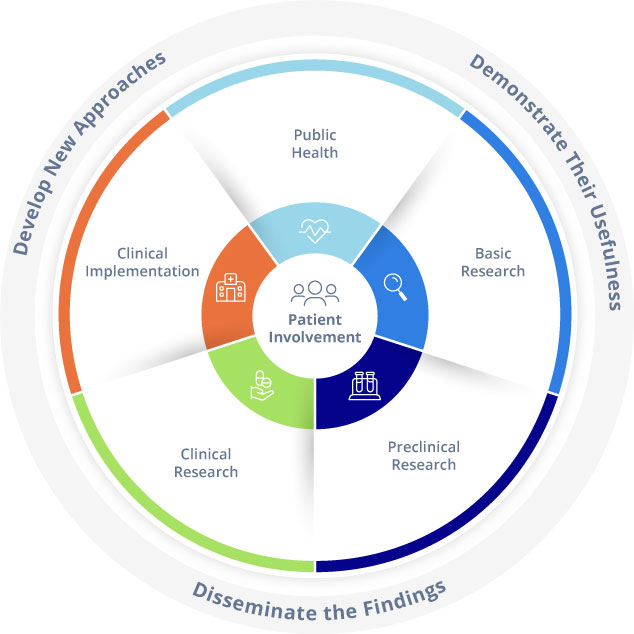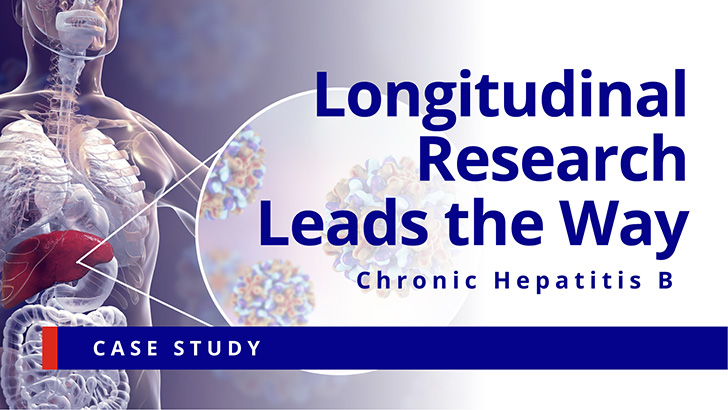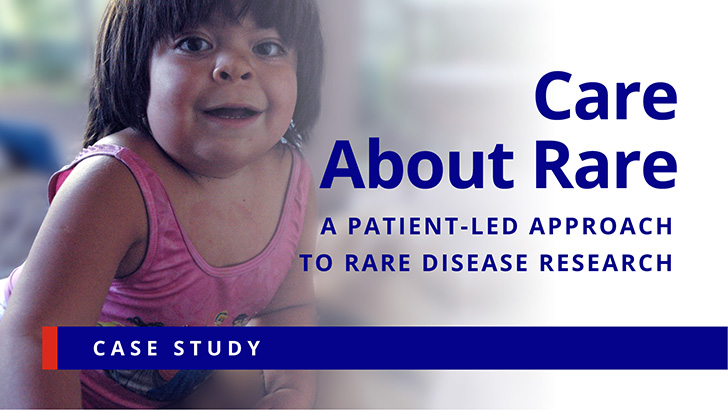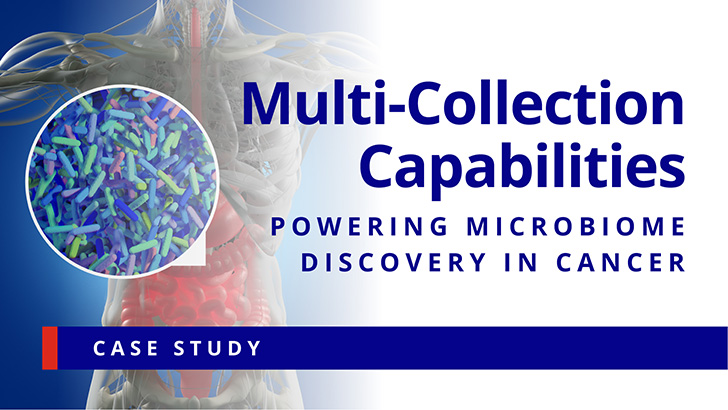What is Medical Research? How Can I Participate in Research Studies?
Ever wonder how researchers come up with new treatments or diagnostic tests? Well, the truth is that they depend on people like you: People willing to partner with researchers on a learning journey.
Medical researcher–patient partnerships are vital to the search for new therapies and potential cures.
Medical researchers seek to uncover new insights about the onset of diseases or conditions and how they progress, so that they can:
But to achieve this, they need people like you to participate in research studies.

Sanguine supports the medical research community by connecting our patient member communities to studies that improve the understanding, therapies, or devices linked to specific conditions and diseases.
To ensure that a developing therapy, treatment, or device does what it’s intended to do and is safe for people to use, medical research proceeds through several progressive phases. These are the basic, preclinical, translational, and clinical research stages.
Basic research seeks to understand how things work. It probes the mechanisms of a person’s biology or disease. Insights from basic research percolate into the next stage, preclinical research, which involves gathering data and research insights to a specific disease or condition and how it affects the body.
At this stage, researchers generally work with cells or animals - or samples of human or animal tissues - in laboratories. They gather data on how diseases work and test the theory or mechanism of potential therapies, but they are not yet offering new treatments or therapies to patients.
These phases aim to look for knowledge gaps or limitations that - if closed - could help people live healthier and longer lives. Another goal is to test the potential of a proposed intervention in a laboratory to discover - and fix! - any issues before the intervention is tested in people.
Sanguine is frequently involved with preclinical research studies.
Whereas basic or preclinical research tests the scientific theory and potential application of a health intervention, translational research links this knowledge to people. Translational research seeks to apply basic or preclinical research into the lives of people and their communities to improve the health of individuals or the general public.
This kind of research can roughly be divided into two different types. The first involves moving discoveries made in basic or preclinical studies into studies involving people. The second involves research that seeks to integrate best health practices into populations. What does this last point mean? The basic idea is that observations made in the laboratory, or observed within a population, are studied and understood to be converted into useful interventions that improve the health of people or their communities.
Translational research involves human biospecimen collection. Biospecimens are biological materials like blood, saliva, stool, urine, and sputum that contain a vast amount of information stored in the form of genes, proteins, and cells. Biospecimen collection for translational research fulfills two main functions - 1) improving the understanding of mechanisms responsible for a specific disease and 2) facilitating the development of therapeutics against it. Therefore, scientists are better positioned to:
- Identify and validate new biomarkers for a disease
- Identify how diseases progress and vary
- Group patients as more or less likely to respond to specific medications
- Develop screening tests that detect biomarkers associated with certain stages or subtypes of a disease
Translational research streamlines the clinical research process and aims to ensure a higher success rate for clinical trials. Translational research is paving the road to treatment with fewer side effects and more personalized medicine.
Sanguine is frequently involved with preclinical research studies.
Clinical research involves evaluating patient outcomes after introducing a new treatment or therapy. This happens through specialized studies called clinical trials where a proposed drug or treatment is offered to people, and its effects are rigorously and systematically studied.
Clinical trials are usually broken down into four phases (phases 1-4), which ultimately reveal what works in healthcare and medicine - and what doesn’t. These studies ask:
- Does the proposed treatment work in people?
- Is it safe?
- Is it better than the existing treatment?
The goal of clinical research is often to gain regulatory approval to move a new intervention into healthcare.
Sanguine is sometimes involved with clinical trials.
This is the part of medical research where the pace slows. It can take 12 to 15 years- and $1 billion - to bring a new medication to market.
Loosely speaking, there are five stages to making a new treatment available to patients:
- Discovery and development
- Preclinical research
- Clinical development
- FDA review and approval
- Post-market monitoring
You may notice that the first three steps roughly parallel the research stages we’ve already covered (basic discoveries, preclinical investigations to test theories and proposed mechanisms of action, and then testing in people). The fourth step uses results from clinical trials to gain regulatory approval. The fifth step monitors the general public for adverse effects after the new drug begins to be prescribed by physicians and used by patients.
Sanguine is most commonly involved with studies in the first two bullet points above.
Scientific research helps you and others who share your condition because it leads to products that can improve a patient’s quality of life or even lengthen it. Joining a research study is one of the best ways to help people who share your condition.
In fact, altruism is the main motivation that spurs people to join health research studies. According to a 2019 report by The Center for Information & Study On Clinical Research Participation, the top three reasons participants joined a study is because it may help:
- Advance science and the treatment of my disease/condition, and
- Save or improve the lives of other patients with my disease/condition, and it
- Improves my disease/condition
No matter your motivation for joining one of the studies we’re involved with, we value your participation, and we are eager to partner with you on a shared journey to learn more about your disease or condition.
Sanguine makes participating in research convenient and easy because we bring the studies to your front door. Our patient members don’t spend time traveling to a research facility. In fact, your impact on medical research is streamlined and simple, and you can start today by signing up online.
Perfect, you want to participate in research studies! The next step is to sign up for a study on our website. Here’s what you can expect next:
- Screening. After signing up, a research coordinator will contact you by phone for a 10-to-15-minute screening appointment. Because each study has unique inclusion criteria, the goal is to match you to an appropriate study. The coordinator will ask confidential questions about your health and demographic information; honesty is required by you, and we handle your data with the utmost privacy.
- Informed consent and documentation. Informed consent is a vital part of research involving people. In this step, study participants are educated on their rights.
- Appointment. We will schedule your at-home appointment with one of our trained mobile medical personnel after your documentation is complete.
- Compensation. After your at-home visit concludes, you will receive a prepaid card - and the priceless satisfaction of knowing you are helping to advance the next scientific breakthrough.




